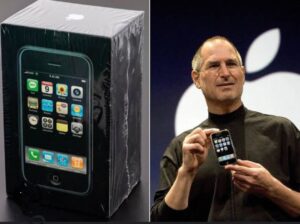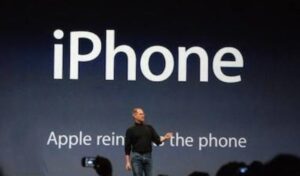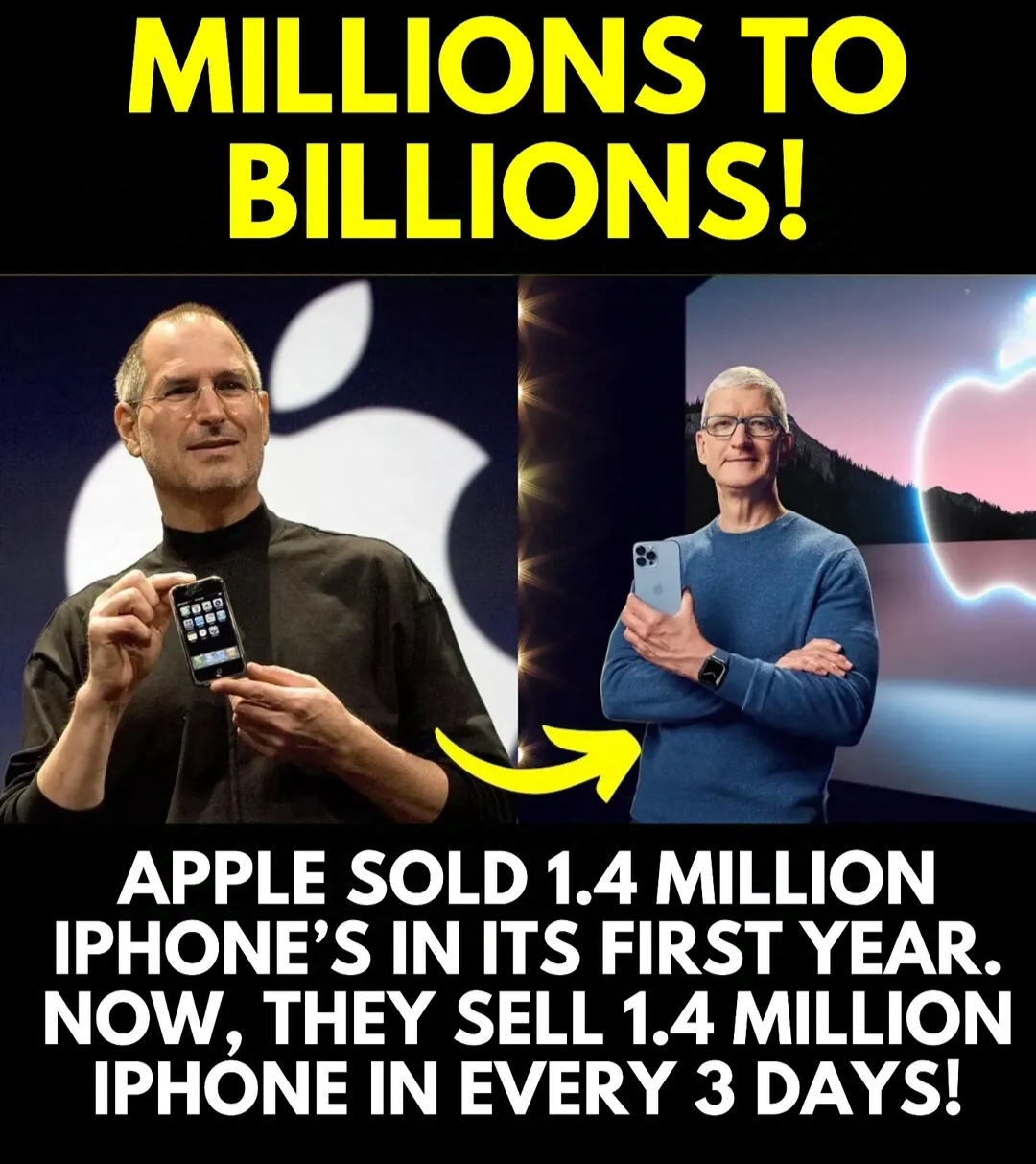Millions to Billions: The Incredible Growth of Apple’s iPhone
When Apple launched the first iPhone in June 2007, the tech world watched closely. After years of speculation and anticipation, Apple unveiled a device that combined a phone, an iPod, and an internet communicator into a single, sleek package. In its first year, Apple sold 1.4 million iPhones, a respectable number for a groundbreaking product entering a competitive market. Fast forward to today, and Apple is selling an astounding 1.4 million iPhones every three days. This remarkable transformation from millions to billions underscores not just the iPhone’s dominance but also the evolution of consumer technology, market strategies, and brand loyalty.
The Launch of the iPhone: A Revolutionary Moment
The introduction of the iPhone marked a significant departure from existing smartphones. Before the iPhone, devices were often clunky, complicated, and not particularly user-friendly. Apple’s entry into the smartphone market was met with skepticism, as many questioned whether a company best known for its computers and music players could succeed in telecommunications.
However, the iPhone’s innovative design, intuitive touchscreen interface, and seamless integration of apps quickly changed the landscape. Its success laid the groundwork for what would become the smartphone revolution, influencing countless competitors and spurring advancements in mobile technology.

Early Adoption and Market Penetration
The initial sales figures were promising but modest by today’s standards. Selling 1.4 million units in its first year was a solid foundation, especially considering that the smartphone market was still in its infancy. Apple focused on marketing the iPhone as a premium product, appealing to early adopters who were eager to embrace cutting-edge technology.
Apple’s marketing strategy highlighted the device’s unique features, such as the App Store, which launched a year later and transformed the way users interacted with their devices. The concept of downloading third-party applications on a mobile device was revolutionary and became a significant factor in the iPhone’s growing popularity.
The Growth Surge: From Millions to Billions
The real turning point for the iPhone came with the launch of the iPhone 3G in 2008, which introduced faster internet connectivity and GPS capabilities. This model, combined with the release of the App Store, catalyzed a rapid increase in sales. By the end of 2009, Apple had sold over 25 million iPhones, showcasing the device’s widespread acceptance.
Fast forward to the present day, where Apple now sells an astonishing 1.4 million iPhones every three days. This explosive growth can be attributed to several key factors:
4. Strong Marketing Strategies
Apple’s marketing campaigns are legendary. The company’s ability to create buzz around new releases through targeted advertising, keynote presentations, and product placement has generated excitement and anticipation. The “Think Different” slogan and iconic advertising campaigns have positioned Apple as a premium brand in consumers’ minds.
5. Retail Experience
Apple’s retail stores offer a unique shopping experience, where customers can interact with products and receive personalized service. The hands-on experience allows potential buyers to test the iPhone’s features, increasing the likelihood of purchase. Furthermore, the Genius Bar provides ongoing support, enhancing customer satisfaction.
6. Evolving Consumer Behavior
As technology has advanced, so too has consumer behavior. The smartphone has become an indispensable part of daily life, serving not only as a communication tool but also as a mini-computer for browsing, shopping, and social media. The pandemic accelerated this trend, as people relied more heavily on their devices for remote work and social interaction.

Challenges and Competition
While Apple’s growth has been impressive, it hasn’t been without challenges. The smartphone market has become increasingly saturated, with numerous competitors vying for market share. Android devices from manufacturers like Samsung, Google, and OnePlus offer compelling alternatives that often come at lower price points.
Moreover, the rapid pace of technological advancement means that consumers are frequently on the lookout for the next big thing. Apple must continuously innovate to maintain its position at the forefront of the industry. Issues such as supply chain disruptions, regulatory scrutiny, and environmental concerns also pose potential hurdles for the company.
The Future of the iPhone
Looking ahead, the future of the iPhone appears promising but will undoubtedly require Apple to navigate a complex landscape. Emerging technologies like augmented reality (AR) and virtual reality (VR) present new opportunities for innovation. Apple has already begun exploring AR with features like ARKit, and many anticipate that future iPhones will incorporate these technologies more extensively.
Additionally, as competition intensifies, Apple may need to reconsider its pricing strategies. While the iPhone is positioned as a premium product, introducing a broader range of models at different price points could capture a larger segment of the market. The success of the iPhone SE demonstrates that there is demand for more affordable options without compromising quality.

Conclusion: A Legacy of Innovation
The journey from selling 1.4 million iPhones in its first year to selling that many every three days is a testament to Apple’s innovative spirit, marketing prowess, and understanding of consumer needs. The iPhone has not only changed the way we communicate but has also transformed entire industries—from app development to mobile photography.
As Apple continues to innovate and adapt to changing market dynamics, the iPhone will likely remain at the center of the company’s strategy. The device has redefined what a smartphone can be and will continue to influence the tech landscape for years to come. The story of the iPhone is not just about sales numbers; it is about the profound impact that technology can have on our lives and the world around us.

[…] Read thisa also: Millions to Billions: The Incredible Growth of Apple’s iPhone. […]
Hello great blog! Does running a blog such as this take a great deal of work?
I have very little expertise in computer programming however
I had been hoping to start my own blog in the near future.
Anyway, if you have any suggestions or techniques for new blog owners please share.
I know this is off topic however I just needed to ask.
Cheers!!